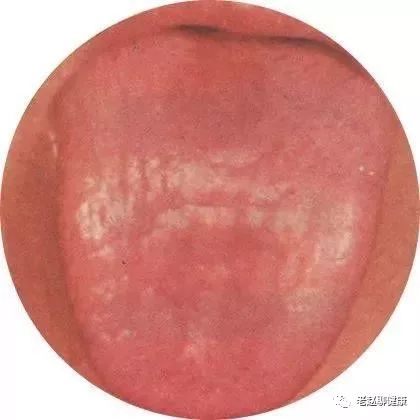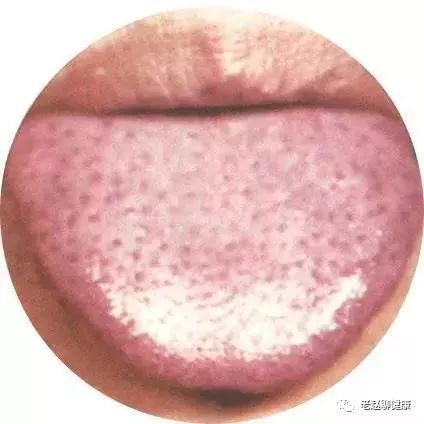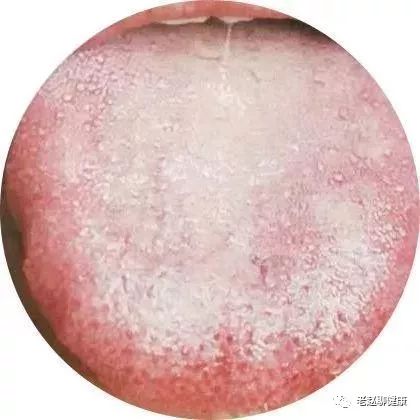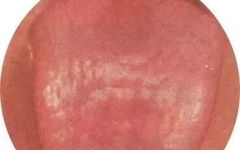The tongue is related to the internal organs and serves as the foundation of tongue diagnosis. The tongue is the sprout of the heart and also an external manifestation of the spleen.
The tip of the tongue → Heart and Lung; the middle of the tongue → Spleen and Stomach; the root of the tongue → Kidney; the sides of the tongue → Liver and Gallbladder.
The tongue quality, also known as the tongue body, refers to the muscular and vascular structure of the tongue.
The tongue coating is a layer of coating attached to the tongue body, generated by the stomach qi.
Observing tongue color — the color of the tongue body.
Types of Tongue Color:
Pale white tongue indicates deficiency and cold syndrome, a sign of weak yang qi and insufficient qi and blood, such as yang deficiency or blood deficiency.
Red tongue indicates heat syndrome, such as interior excess heat syndrome or yin deficiency with internal heat.
Crimson tongue indicates severe internal heat, such as yin deficiency with excessive fire.
Purple tongue can indicate both cold and heat, with signs of excessive evil heat or internal cold, and purple spots indicating blood stasis.

Observing Tongue Shape — The vitality and condition of the tongue body
Vitality → The tongue body is bright and moist → Sufficient body fluids;
Withered → The tongue body is dry and shriveled → Body fluids are damaged;
Old → The tongue body has rough texture, and its color is firm and dull → Excess syndrome, heat syndrome;
Young → The tongue body has delicate texture, and its color is plump and tender → Deficiency syndrome, cold syndrome.
Swollen tongue, plump and tender → Spleen and Kidney yang deficiency, body fluids not transforming, water and phlegm obstructing;
Swollen → Excess heat in the heart and spleen; poisoning → Swollen and dark purple tongue.
Thin tongue indicates yin and blood deficiency; both qi and blood deficiency; yin deficiency with excessive fire, and body fluids consumed.
Cracked tongue indicates loss of yin fluids unable to nourish the tongue surface: Excess heat damaging body fluids, deficiency of yin essence; blood deficiency.
Teeth marks on the tongue edges indicate spleen deficiency and excessive cold dampness.
Thorny tongue, with enlarged and elevated papillae resembling thorns, indicates excessive heat: tip of the tongue → Excess heart fire;
Sides of the tongue → Excess liver and gallbladder fire; middle of the tongue → Excess stomach and intestinal heat.
Observing Tongue Movement — The movement of the tongue body
Types of Tongue Movement:
Stiff tongue: The tongue body is stiff, movement is not flexible, bending and stretching are difficult or impossible, leading to slurred speech. Heat entering the pericardium, phlegm obstruction; high fever damaging body fluids, excessive evil heat, signs of stroke.
Flaccid tongue:
The tongue body is weak, unable to extend or retract.
Extreme qi and blood deficiency, loss of nourishment to the sinews.
Both qi and blood are deficient; extreme yin deficiency; heat injuring yin.
Trembling: The tongue body trembles uncontrollably, unable to move voluntarily, indicating qi and blood deficiency, weak yang qi, extreme heat generating wind, internal wind movement.
Protruding: Protruding → The tongue extends outward; playing → The tongue occasionally extends slightly outside the mouth and immediately retracts, or the tongue licks the lips or corners of the mouth.
Heat in the heart and spleen: Protruding tongue → Epidemic toxins attacking the heart, righteous qi exhausted.
Playing tongue → Signs of moving wind, poor intelligence.
Deviated: The tongue body is tilted to one side, indicating stroke or signs of stroke.
Shortened: The tongue body is tight and cannot extend, indicating critical conditions: Cold congealing the sinews, heat disease injuring body fluids, phlegm dampness obstructing.

Observing Tongue Coating: Main Content and Clinical Significance
Observing tongue coating includes observing coating color and coating quality (the tongue coating is generated by the stomach qi rising).
Observing Coating Color (Colors: White, Yellow, Gray, Black)
White coating: Exterior syndrome, cold syndrome. Thin white coating; pale tongue with white coating → Interior cold syndrome; thick coating → Coating indicating epidemic or internal abscess.
Yellow coating: Heat syndrome, interior syndrome. White turning yellow → Exterior evil entering the interior transforming into heat; the yellower the coating, the heavier the evil heat.
Gray coating: Interior syndrome: Interior heat syndrome, cold congealing syndrome. Gray and moist → Cold dampness obstructing; gray and dry → Excess heat injuring body fluids, yin deficiency with excessive fire.
Black coating: Interior syndrome: Extreme heat, excessive cold. Black and dry → Extreme heat with depleted body fluids; black and moist → Yang deficiency with excessive cold.
Observing Coating Quality (Thickness, Moisture, Greasiness, Peeling, Rooted or Non-rooted)
Thickness: Thin → See the bottom; thick → Cannot see the bottom. Thin coating → Pathogenic factors are superficial; thick coating → Pathogenic factors have penetrated deeper.
Moisture: Body fluids: Slippery ← Moist → Dry → Rough. Slippery coating → Water dampness stagnating; dry rough coating → Excess heat injuring body fluids.
Greasiness: Greasy → Turbid and slippery coating, fine and dense particles, difficult to scrape off → Damp turbidity, phlegm, food accumulation, etc., where yang qi is suppressed by yin evil; rotten → Larger particles, soft and thick, resembling tofu dregs accumulating on the tongue surface, easy to scrape off → Excess yang heat, rising turbid evil qi from the stomach, such as food accumulation, phlegm turbidity.
Peeling:
“Mirror tongue,” “glossy tongue,” “flowered peeling tongue.”
Glossy tongue → Stomach yin exhaustion, severe damage to stomach qi.
Flowered peeling tongue → Damage to both stomach qi and yin.
Rooted vs. Non-rooted:
Rooted → Difficult to scrape off → Excess syndrome, heat syndrome, with stomach qi present.
Non-rooted → Scrapes off easily → Deficiency syndrome, cold syndrome, with weakened stomach qi.

Clinical Significance of Tongue Diagnosis
Generally speaking, observing tongue quality focuses on distinguishing the deficiency and excess of the internal organs, while observing tongue coating focuses on distinguishing the depth of pathogenic factors and the existence of stomach qi.
(Tongue quality → Deficiency and excess of internal organs; tongue coating → Depth of pathogenic factors and existence of stomach qi)
(1) Judging the rise and fall of righteous qi: Tongue quality → Pale white indicates qi and blood deficiency; a tongue without coating → Stomach qi is exhausted or stomach yin is severely damaged.
(2) Distinguishing the depth of the disease location: Thick coating → Pathogenic factors have penetrated deeper; crimson tongue → Heat has entered the nutrient and blood levels.
(3) Differentiating the nature of pathogenic factors: Yellow coating → Heat; tongue quality with purple spots → Blood stasis.
(4) Inferring the progression of the disease: White turning yellow, turning black → Pathogenic factors have moved from the exterior to the interior, from mild to severe.

